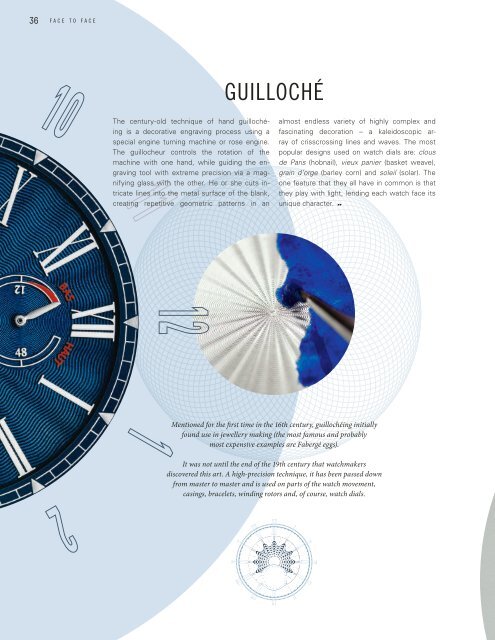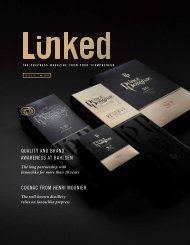Janoschka magazine Linked_V8_2023
The customer magazine by Janoschka and Linked2Brands.
The customer magazine by Janoschka and Linked2Brands.
You also want an ePaper? Increase the reach of your titles
YUMPU automatically turns print PDFs into web optimized ePapers that Google loves.
36 f a c e t o f a c e<br />
issue #8 ©<br />
l i n k e d<br />
37<br />
GUILLOCHÉ<br />
MICROPAINTING<br />
The century-old technique of hand guillochéing<br />
is a decorative engraving process using a<br />
special engine turning machine or rose engine.<br />
The guillocheur controls the rotation of the<br />
machine with one hand, while guiding the engraving<br />
tool with extreme precision via a magnifying<br />
glass with the other. He or she cuts intricate<br />
lines into the metal surface of the blank,<br />
creating repetitive geometric patterns in an<br />
almost endless variety of highly complex and<br />
fascinating decoration – a kaleidoscopic array<br />
of crisscrossing lines and waves. The most<br />
popular designs used on watch dials are: clous<br />
de Paris (hobnail), vieux panier (basket weave),<br />
grain d’orge (barley corn) and soleil (solar). The<br />
one feature that they all have in common is that<br />
they play with light, lending each watch face its<br />
unique character.<br />
The perfect base for micro-painting is mother of pearl.<br />
Some of the details are so fine that the painters<br />
use brushes with a single bristle.<br />
All micro-painted pieces are handmade and unique.<br />
MARQUETRY TECHNIQUE<br />
Mentioned for the first time in the 16th century, guillochéing initially<br />
found use in jewellery making (the most famous and probably<br />
most expensive examples are Fabergé eggs).<br />
Marqueteurs decorate watch dials with a wide range of different woods<br />
in a multitude of colours. They cut the pieces to shape following their inspiration<br />
and the selected or set motifs, join them together and glue them on.<br />
It was not until the end of the 19th century that watchmakers<br />
discovered this art. A high-precision technique, it has been passed down<br />
from master to master and is used on parts of the watch movement,<br />
casings, bracelets, winding rotors and, of course, watch dials.









